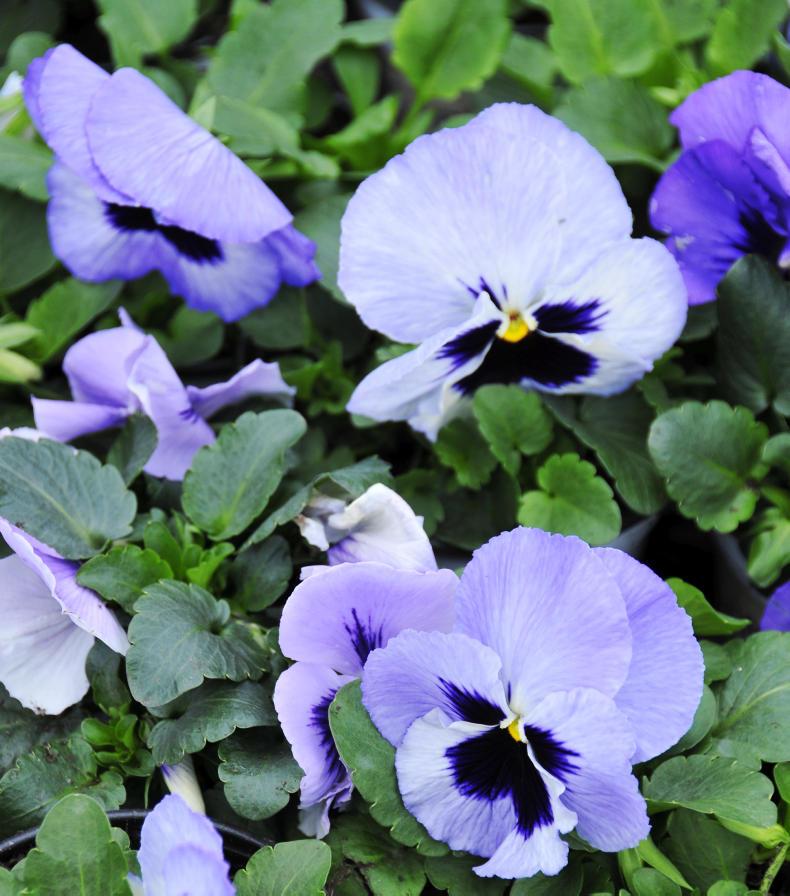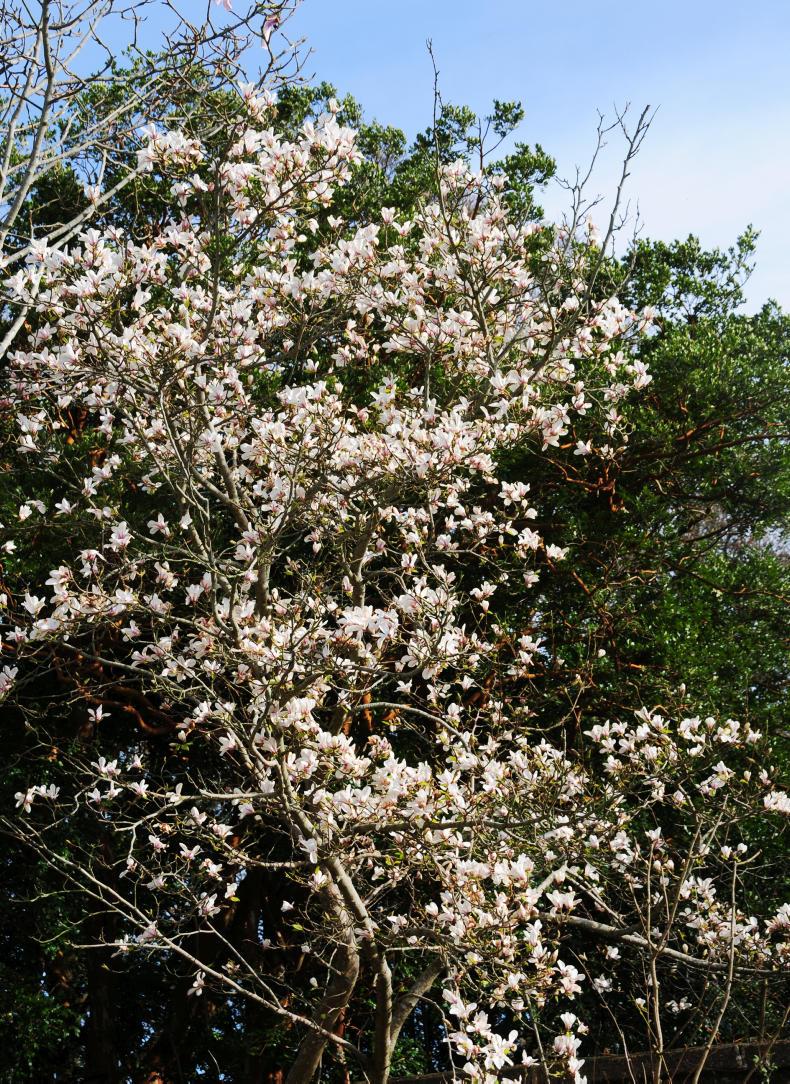Magnolias are among the most spectacular flowering trees, rivalled by only a few other flowering trees, such as flowering cherries, crabapples and flowering dogwoods.
Even though tree magnolias are rivalled for flowering by these other popular tree species, they are not outdone by them because magnolias have a special majesty of their own.
The tree magnolias can rise to 20 metres or so in some cases with a trunk of 60cm.
These trees are generally only seen in botanic gardens or private collections, but they are not difficult to grow and can be grown in any garden with enough space to show them off properly.
First flowering plants
Apart from their great beauty, magnolias have an honoured place in the plant kingdom because they are considered to be the first flowering plants, or at least very like the first flowering plants.
They followed on from conifers and still have a cone-like structure at the centre of the flower and six or more broad white petals around the outside.
All flowering plants are classed in the order of magnolia. These trees appeared about 140 million years ago, even before insets for pollination and magnolias.
It is thought they were structured to accommodate flying beetles as pollinators – a more efficient system than simple wind pollination.
Whatever about their origins and history, magnolias are superb garden trees.
The most dramatic and best known is Magnolia campbellii, a species from the Indian Himalayas that can grow to 15 metres or 20 metres and 10 metres across.
The flowers are first borne in the high branches and cannot be reached, but start to appear lower down as the tree ages.
Full flower
What a sight this tree is in full flower, which is usually from February. The flowers are huge and may be 30cm across in shades of soft pink-purple, although dark red and pure white forms also occur. ‘Charles Rafill’ is purple-pink and ‘Darjeeling’ is a darker red-purple.
The tree flowers on bare branches and flowering is finished by the time leaves appear.
Carrying the size characteristics of its tall parent Magnolia campbellii and, the free-flowering characteristic of its other parent, Magnolia denudata, the lily tree of China, Magnolia x veitchii is widely grown in collections for its splendid show of flowers in early spring.
Magnolia kobus is a big tree magnolia, growing to 12 metres and 10 metres wide, covered plentifully with smallish white flowers with a flash of purple at the base.
The shrubby species Magnolia stellata, much seen in gardens, it thought to be a two-metre dwarf selection of this Japanese species. Magnolia kobus is also a parent of some of the best smaller tree magnolias, notably ‘Leonard Messel’, with a tremendous show of light pink flowers on a loose-branched tree.
It can make eight metres tall and wide, as can its similar relative of the same cross, the lovely pure-white ‘Merrill’, which retains much of its kobus parent’s elegance and charm.
Other magnolias form small trees, such as the very popular Magnolia x soulangeana, but these, while very beautiful, do not have the sheer grandeur of the tree magnolias, having been bred for smaller spaces.
Mount Congreve
One of the most impressive sights in any garden in the country is the avenue of tree magnolias at Mount Congreve in Waterford, a double row of splendid flowering trees.
Not that many gardens can rise to such an extraordinary statement, but to see it might be an inspiration to plant one tree magnolia at least.
Tree magnolias like any good deep and fertile soil, open to the sunshine and sheltered from severe exposure, otherwise they will not grow tall.
Spring has generally been so slow, cold and wet that it might be an idea to buy some spring bedding plants and bring a touch of colour to the garden for a few weeks at least.
Pansies, primroses, double daisies and other spring bedding plants are sold in six or eight packs and only a few can have a big impact.

Spring has generally been so slow, cold and wet, that it might be an idea to buy some spring bedding plants.They should be planted near the entrance to the house where they will be most seen, planted in the open ground or in pots or other containers.
They are especially welcome on an important family occasion or some event when extra effort is required.
Bedding is usually not worth keeping after flowering but primroses might be worth a try,
Read more
Lily Champ: Get the wellies out and get back in the garden
Five gardening jobs to do this week
Magnolias are among the most spectacular flowering trees, rivalled by only a few other flowering trees, such as flowering cherries, crabapples and flowering dogwoods.
Even though tree magnolias are rivalled for flowering by these other popular tree species, they are not outdone by them because magnolias have a special majesty of their own.
The tree magnolias can rise to 20 metres or so in some cases with a trunk of 60cm.
These trees are generally only seen in botanic gardens or private collections, but they are not difficult to grow and can be grown in any garden with enough space to show them off properly.
First flowering plants
Apart from their great beauty, magnolias have an honoured place in the plant kingdom because they are considered to be the first flowering plants, or at least very like the first flowering plants.
They followed on from conifers and still have a cone-like structure at the centre of the flower and six or more broad white petals around the outside.
All flowering plants are classed in the order of magnolia. These trees appeared about 140 million years ago, even before insets for pollination and magnolias.
It is thought they were structured to accommodate flying beetles as pollinators – a more efficient system than simple wind pollination.
Whatever about their origins and history, magnolias are superb garden trees.
The most dramatic and best known is Magnolia campbellii, a species from the Indian Himalayas that can grow to 15 metres or 20 metres and 10 metres across.
The flowers are first borne in the high branches and cannot be reached, but start to appear lower down as the tree ages.
Full flower
What a sight this tree is in full flower, which is usually from February. The flowers are huge and may be 30cm across in shades of soft pink-purple, although dark red and pure white forms also occur. ‘Charles Rafill’ is purple-pink and ‘Darjeeling’ is a darker red-purple.
The tree flowers on bare branches and flowering is finished by the time leaves appear.
Carrying the size characteristics of its tall parent Magnolia campbellii and, the free-flowering characteristic of its other parent, Magnolia denudata, the lily tree of China, Magnolia x veitchii is widely grown in collections for its splendid show of flowers in early spring.
Magnolia kobus is a big tree magnolia, growing to 12 metres and 10 metres wide, covered plentifully with smallish white flowers with a flash of purple at the base.
The shrubby species Magnolia stellata, much seen in gardens, it thought to be a two-metre dwarf selection of this Japanese species. Magnolia kobus is also a parent of some of the best smaller tree magnolias, notably ‘Leonard Messel’, with a tremendous show of light pink flowers on a loose-branched tree.
It can make eight metres tall and wide, as can its similar relative of the same cross, the lovely pure-white ‘Merrill’, which retains much of its kobus parent’s elegance and charm.
Other magnolias form small trees, such as the very popular Magnolia x soulangeana, but these, while very beautiful, do not have the sheer grandeur of the tree magnolias, having been bred for smaller spaces.
Mount Congreve
One of the most impressive sights in any garden in the country is the avenue of tree magnolias at Mount Congreve in Waterford, a double row of splendid flowering trees.
Not that many gardens can rise to such an extraordinary statement, but to see it might be an inspiration to plant one tree magnolia at least.
Tree magnolias like any good deep and fertile soil, open to the sunshine and sheltered from severe exposure, otherwise they will not grow tall.
Spring has generally been so slow, cold and wet that it might be an idea to buy some spring bedding plants and bring a touch of colour to the garden for a few weeks at least.
Pansies, primroses, double daisies and other spring bedding plants are sold in six or eight packs and only a few can have a big impact.

Spring has generally been so slow, cold and wet, that it might be an idea to buy some spring bedding plants.They should be planted near the entrance to the house where they will be most seen, planted in the open ground or in pots or other containers.
They are especially welcome on an important family occasion or some event when extra effort is required.
Bedding is usually not worth keeping after flowering but primroses might be worth a try,
Read more
Lily Champ: Get the wellies out and get back in the garden
Five gardening jobs to do this week







 This is a subscriber-only article
This is a subscriber-only article










SHARING OPTIONS: